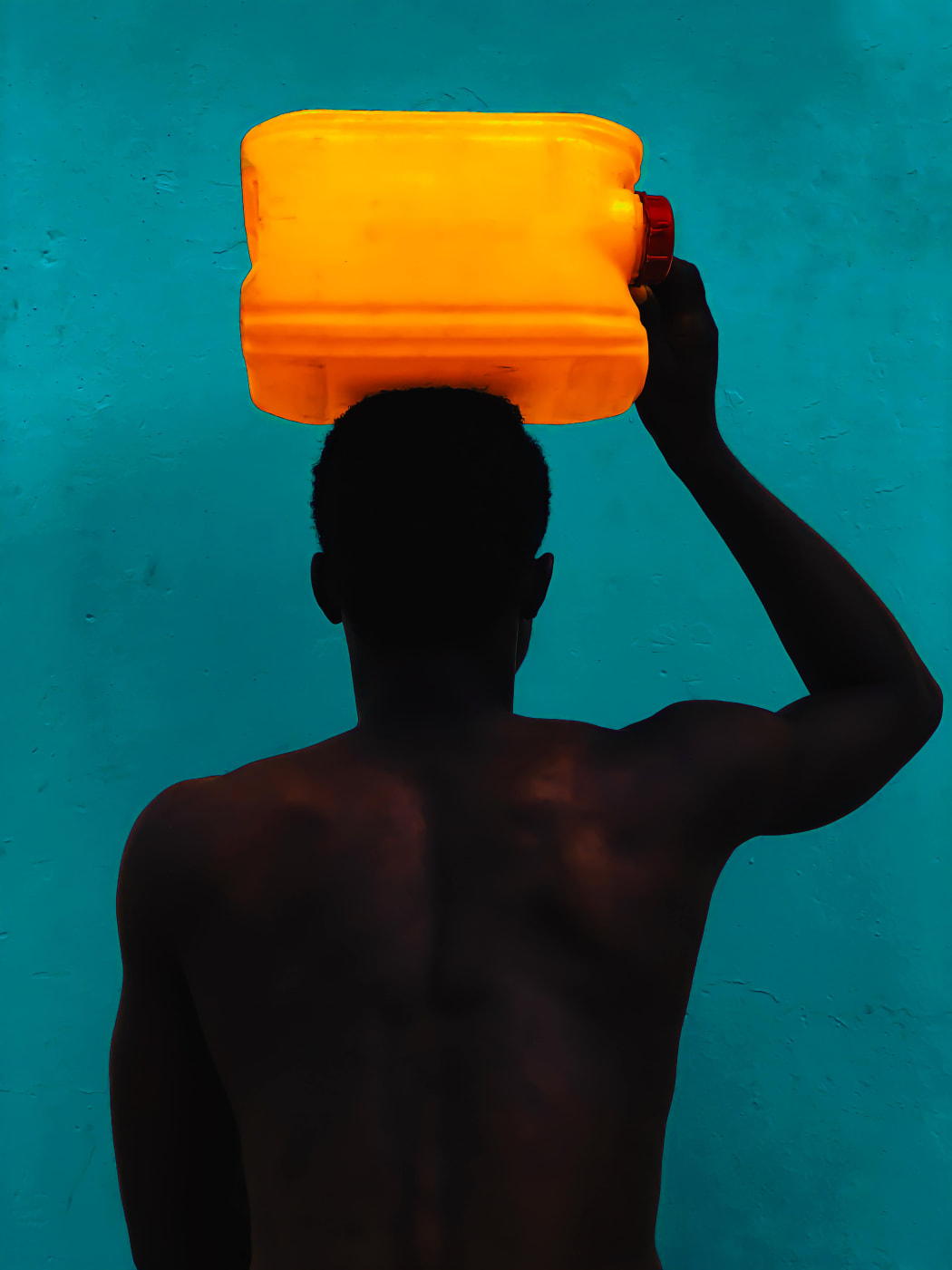
Could you please start by telling us about yourself and what first got you interested in photography?
My name is Sarfo Emmanuel Annor, a 20-year old visual artist from Koforidua in the Eastern Region of Ghana.
Growing up as a kid, I had always been fascinated by art and fashion. After having studied visual arts in high school, I first started as a painter before becoming the apprentice of a fashion designer. Although I later chose another direction, this shaped my artistic eye and confirmed my interest for fashion and beauty. Like many young creatives in Ghana, I then came across photography when I got my first smartphone.
Inspired by my past experience as a painter, I therefore started shooting portraits of people around me. My portraits mostly feature young models because I couldn’t afford professional models when I started. My niece was therefore the first model for my photos. I later on realized that kids carry some special magic around them which really brings life to photos. From that moment onwards, I chose to stick to this concept.
How is the creative landscape of Ghana and how did it influence you?
Ghana’s creative landscape is really booming these days. Though there isn’t enough support from the government, many creatives like myself have been able to really promote ourselves through the internet. Social media platforms, especially Instagram, have really helped us reach a wider audience. Without it, I probably would not be collaborating with The Bridge Gallery today.
When it comes to the medium I chose, I think photography is the most efficient and direct way of expression for many young creative minds in Ghana. Photographers such as James Barnor came along a while ago, but the artistic medium is truly booming nowadays, creating amazing creative opportunities.
What were your main inspirations for your series “Life in Color”?
Influenced by Ghanaian culture and my personal experiences, colors are omnipresent in my work. I hope the use of vibrant colors can positively contribute to someone’s mood. My country’s situation also influences the topics I address in my artwork. Beyond fashion references and a search for beauty in vibrant colors, I wish to pass strong messages on important topics such as the current water crisis in Ghana to name but one.
How does your message and vision spread across each piece of your series?
I try to tell my African story through fashion and beauty. These beautiful aesthetics carry my vision of the world with them. In “The Unseen” for example, I wanted to raise awareness on the misuse of plastic bags in our country. Here, the model has her face covered with a plastic bag to symbolize the threat that pollution now represents in my country. It has become suffocating. It sometimes reaches a point where very often, a plastic bag could end up covering your face when the wind blows. I also wish to change the narrative around black skin by emphasizing on the strong contrast between the colorful background and my models.
Could you please tell us more about the power of colors in your photography?
We are more emotionally connected to colors than we tend to think. Our brain associates emotions to specific colors. So by using warm colors, I hope I can affect someone’s mood positively. It can even act as a therapy for the viewer. The background’s vibrant color is efficient but the use of Ghana’s traditional cloth, the Kente, can also transmit these emotions. While the green inspires spiritual renewal, blue represents peace, love and harmony.
Are you planning to switch to a larger camera or the iPhone forms part of your art’s essence?
Like many young artists in Ghana, phones are the only tools we can use to start making fine art photography. Cameras and other equipments are too expensive. Although being for financial purposes at the beginning, this has now become part of my artistic identity. I have plans of acquiring a professional camera in the future but for now I wish to continue with my iPhone. But, you can notice the evolution of style in my artwork as I changed phones. Moving from an Android to an iPhone made it much easier for me to edit my photos. It also gives me more creative freedom.
